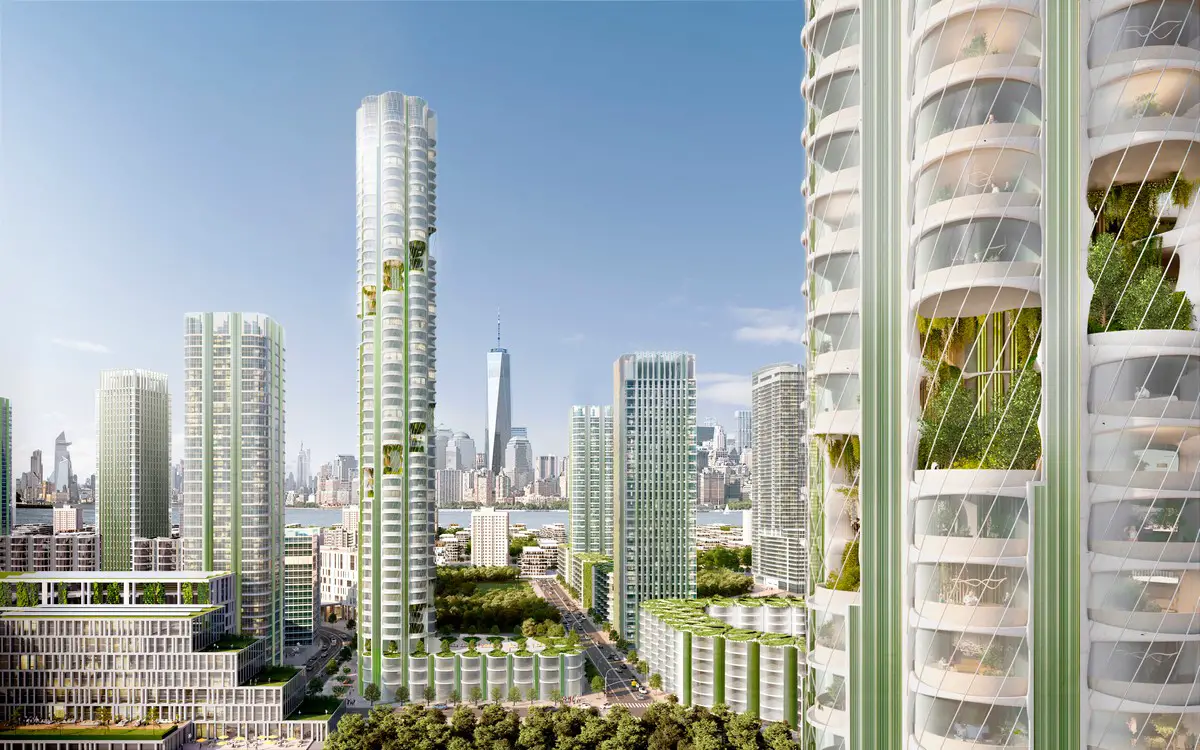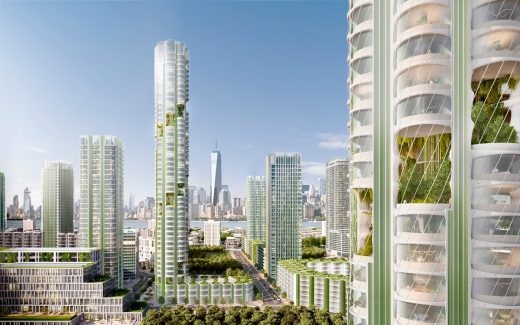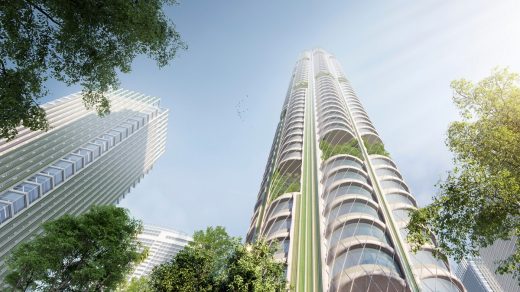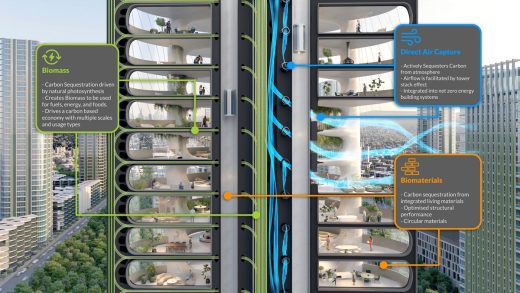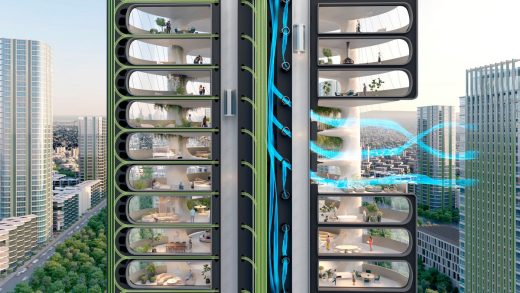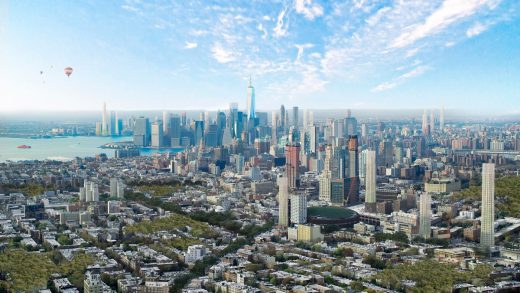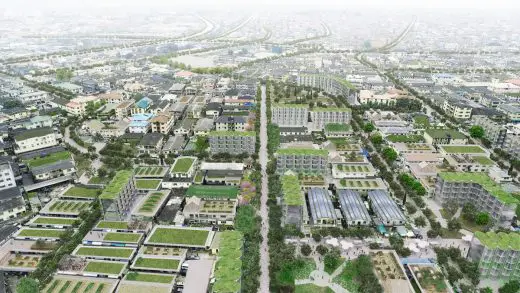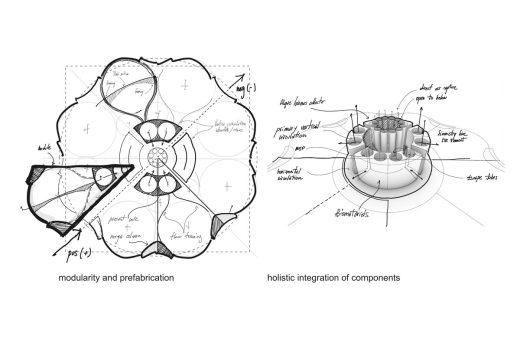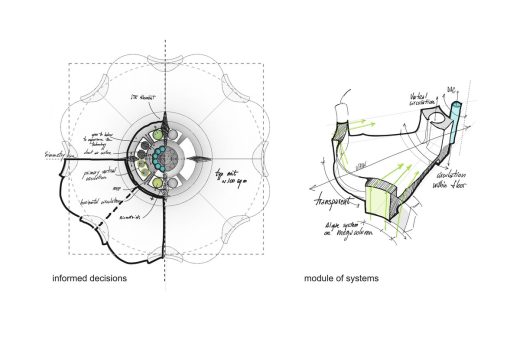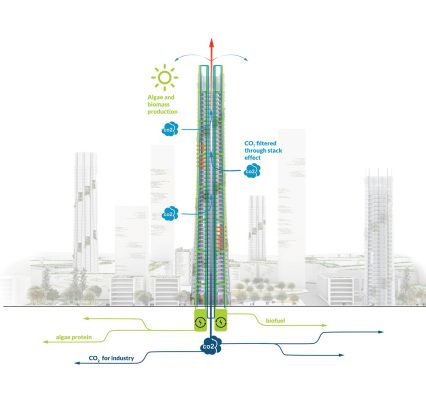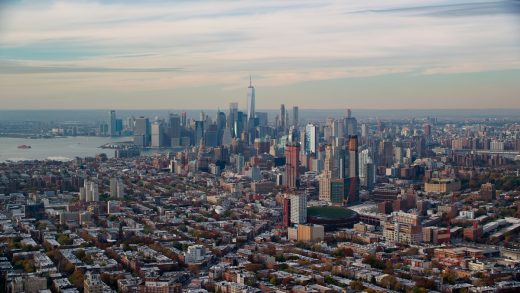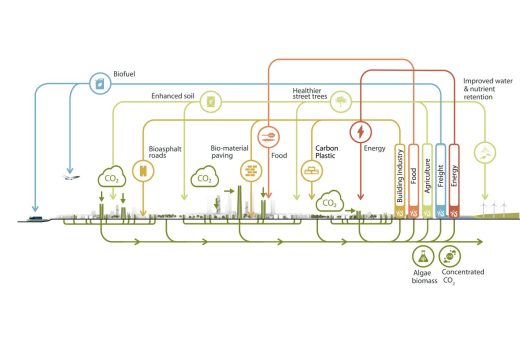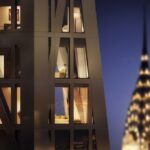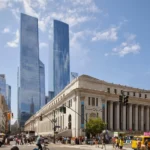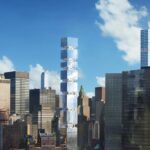Urban Sequoia building for absorbing carbon, COP27 Sustainable Architecture, Eco New York City Tower
Urban Sequoia building to sequester carbon by SOM
A full set of images online soon
November 8, 2022
At COP27, SOM Presents Urban Sequoia NOW, a Carbon-Absorbing Building Design That Can be Constructed Today
Design: Skidmore, Owings & Merrill (SOM)
Locations – conceptual: NYC, USA / Lagos, Nigeria, Africa
Expanding upon the research introduced at COP26, SOM has spent the past year refining Urban Sequoia—a radical reimagination of the architecture and construction of buildings and cities—to create a design that is buildable right now.
Renderings © SOM | Miysis
Urban Sequoia NOW building design for absorbing carbon
Today at COP27, the 2022 UN Climate Change Conference in Sharm El-Sheikh, Egypt, Skidmore, Owings & Merrill (SOM) presented Urban Sequoia NOW—a design, readily constructible today, for a building that will sequester carbon throughout its lifecycle. Created by a global interdisciplinary team at SOM, the design was presented by Partner Chris Cooper live in the Buildings Pavilion Auditorium.
There is an urgent need to rethink the design and construction of the built environment. Only three percent of the planet’s surface is covered by cities, yet the world’s urbanized areas generate about 75 percent of all global carbon emissions. And to accommodate increasing populations, the United Nations has predicted that another 230 million square meters of building stock will be needed in cities by 2060.
“We recognize the need to alter the trajectory of climate change by going beyond net zero,” said Cooper. “We need to take carbon out of the atmosphere through the built environment, and we have developed a design to do just that.”
To meet this goal, SOM has started to think of buildings as living organisms that can significantly reduce embodied carbon, generate energy in their operation, absorb carbon from the atmosphere, and last much longer than the typical 60-year lifespan of a building. By combining these strategies, we can design buildings that go beyond net zero carbon.
“We asked ourselves how low we can go in emitting carbon in construction, how high we can go in carbon sequestration, and how long we can go in extending the typical building’s lifespan,” said SOM Partner Kent Jackson. “Our latest concept for Urban Sequoia answers these questions.”
The design brings SOM’s 2021 high-rise prototype from a visionary concept to a buildable reality. The building would reduce upfront embodied carbon by 70 percent—from construction alone—when compared to that of a typical high-rise. In the first five years of the tower’s life, the building would reach a 100 percent reduction in whole life carbon, achieving net zero. Over an extended, 100-year lifespan, an Urban Sequoia building would absorb more than 300 percent of the amount of carbon emitted in its construction and operations.
“To accomplish these goals is to radically rethink the way we design buildings,” said SOM Principal Yasemin Kologlu. “Urban Sequoia is a concept that encompasses every aspect of the design and construction process, reconsidering the way we select materials, design mechanical systems and structures, and integrate innovative technologies—a reimagination that converts them into carbon absorbers.”
Rather than take the typical additive construction approach, in which a structure is built, followed by the facade, the MEP and other building systems, and the interior fit-out—which all add carbon to the atmosphere—we would combine construction into one, streamlined process. In this reductive approach, every part of the building would serve multiple purposes. The design is an inversion: all the systems that are typically hidden in ceilings, like air ducts and other MEP equipment, would be consolidated or even eliminated. SOM’s new approach optimizes the floor slabs to include those systems within the floors, and raises the ceiling heights simply by removing the ceilings altogether, significantly decreasing material use.
Air would flow into underfloor ventilation openings, situated between the slab and a timber floor finish, as well as sky gardens doubling as amenities and large air capture zones. Cool air would move into these gardens and enter open cavities in the building’s core, where the stack effect would bring air up through direct air capture technology embedded within the building’s core and roof. The captured carbon would then be stored and available for use in various industrial applications, completing the carbon cycle and forming the basis of a new carbon-removal economy.
Urban Sequoia NOW, much like the original concept, is applicable to any building type, at any scale, and in any location. Each building type uses carbon-sequestering materials, like timber and bioconcrete, to reduce embodied carbon emissions, and advanced technologies such as energy-generating solar glass to lower operational carbon emissions. The idea across the board is to regenerate the environment in the world’s densest places, where carbon emissions are highest, and to do so with a timeless design that has the flexibility to be adapted over the course of a century. Bringing this idea from concept to reality will create a network of Urban Sequoia buildings across the world that absorb carbon, every year, for the next 100 years or more.
“Urban Sequoia is a systems approach, a philosophy,” said SOM Sustainability Director Mina Hasman. “It is a way of thinking about cities as ecologies, as living and breathing systems that can be reconfigured to achieve dramatic reductions in whole life carbon, reframing the built environment as a solution for the climate crisis.”
Urban Sequoia building to sequester carbon New York images / information received 081122 from Skidmore, Owings & Merrill (SOM)
Previously on e-architect:
Nov 19, 2021
SOM Unveils Urban Sequoia
Design: Skidmore, Owings & Merrill (SOM)
Locations – conceptual: NYC, USA / Lagos, Nigeria, Africa
At COP26, Som Unveiled Urban Sequoia, A Proposal To Transform The Built Environment Into A Network For Absorbing Carbon
Urban Sequoia building design for absorbing carbon
Skidmore, Owings & Merrill (SOM)
Lagos tower design, Nigeria, Africa:
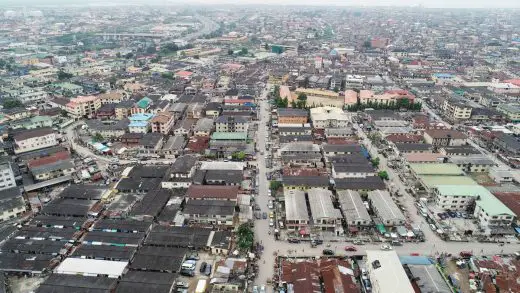
Urban Sequoia building for absorbing carbon
Renderings © SOM | Miysis ; Diagrams © SOM
Location: New York City, USA / Lagos, Nigeria, Africa
New York City Architecture
Contemporary New York Buildings
Manhattan Architecture Designs – chronological list
New York City Architecture Tours by e-architect – Manhattan city walks for groups
New York City Architecture News – selection below:
Company Gallery, corner of Elizabeth and Broome
Architects: BoND (Bureau of Noam & Daniel)
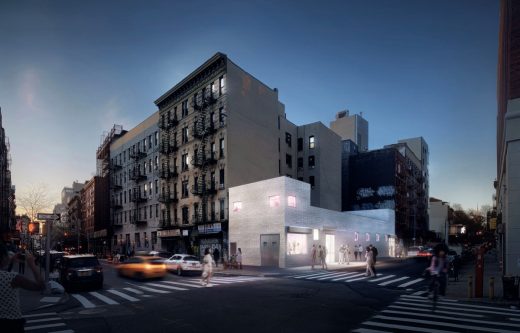
image courtesy of Company Gallery and BoND
Company Gallery
277 Fifth Avenue, NoMad, NYC
Architects: Rafael Viñoly
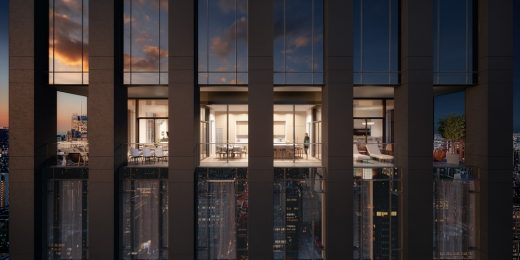
rendering : THREE MARKS
277 Fifth Avenue Building
Comments / photos for the Urban Sequoia building to sequester carbon design by SOM page welcome

